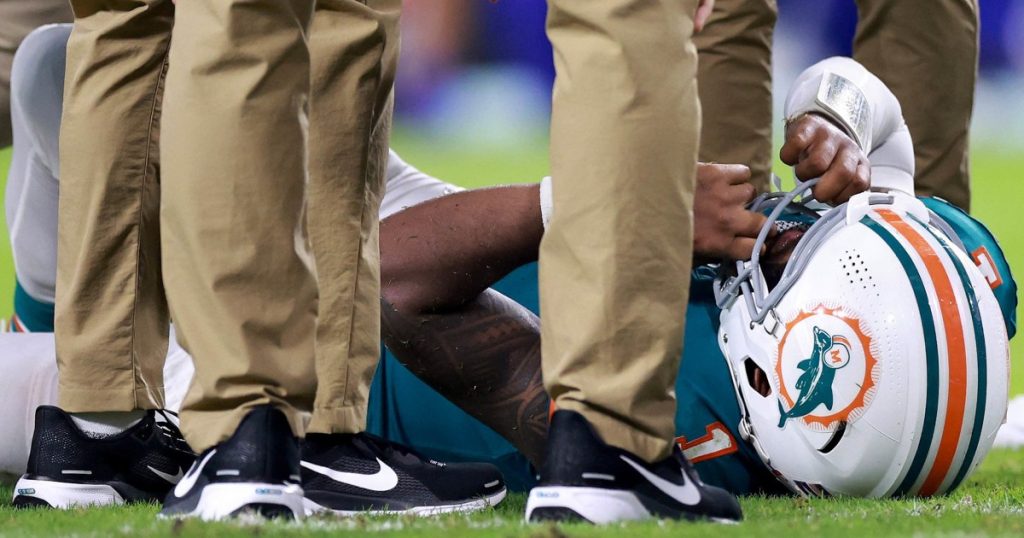Miami Dolphins quarterback Tua Tagovailoa sustained his third confirmed career concussion during a game against the Buffalo Bills, sparking concerns about his health and prompting questions about how many concussions are too many. Tagovailoa collided with Bills safety Damar Hamlin during the third quarter and was able to walk off the field on his own, showing no signs of severe injury. His return timeline remains unclear, with coach Mike McDaniel stating that he is unlikely to play in the next game against the Seattle Seahawks.
Tagovailoa has experienced three confirmed concussions in his NFL career, with two occurring during the 2022 season, which caused him to miss several games. Following his first concussion, he exhibited the fencing response, a common reaction to traumatic brain injuries. However, he was not evaluated for a concussion until days later. His parents had suggested he consider retirement before the current season began, but he opted to continue playing after consulting with a doctor.
Experts caution that determining how many concussions are too many is a complex issue, with no set number that applies to all cases. While some advise athletes to consider quitting a sport after sustaining two concussions, the number of concussions alone is not the primary factor in developing health problems. The frequency of concussions, symptoms experienced, recovery time, and presence of subconcussive blows are all crucial considerations to evaluate an athlete’s risk of long-term issues such as chronic traumatic encephalopathy (CTE).
The “three-concussion rule,” stating that individuals who have experienced three or more concussions should not be exposed to further body-contact trauma, has been referenced in past studies. Recent research suggests that as little as one moderate concussion can have lasting effects on brain function, highlighting the importance of monitoring all head injuries regardless of severity. Misinformation exists around the idea of a strict three-concussion limit, with experts pointing out that other factors play a significant role in assessing an individual’s risk.
Recovery from multiple concussions varies among individuals, with some able to recover fully while others may face chronic symptoms. Common issues that persist after concussions include disabling headaches, memory and attention problems, as well as fatigue that interferes with daily activities. The cumulative effects of head impacts over time can lead to conditions like CTE, which may manifest decades later and have devastating neurological consequences. It is crucial to address all head injuries, including subconcussive blows, to mitigate the risk of long-term brain damage in athletes.


